Our story
This Chapter
Plato's cave
Cave within cave
Poorly charted terrain
What God is not
Tit for tat
In Wonderland
Bibliography
Temper
Footnotes
|
|
"Doubt everything. Find your own light." No question about it. This chapter is, for me, very difficult to write, my writing mostly being reporting. I cannot seem to understand the language of people conversing about God and about spirituality. I can only give it a try, mindful of the Buddha's advice. 0B Edited: May 11, 2015 We human beings have our limitations. Even lowly insects can see and do things we couldn't possibly. For example, we cannot see the guidelines that show bees where flowers hide their nectar. People discovered those lines by using film for black-and-white photography. Reason: insect eyes are sensitive to ultraviolet light as is that old-fashioned film. Our mental limitations also show up when we try to comprehend just what light is. Physicists haven't been able to come up with one single notion (model) that explains all the things we have experimentally established that light can do, what we call the properties of light. Instead, we need two distinct models, each one capable of explaining a large number of those properties, but neither one capable of explaining all of light's properties. Those models are known as the wave model and the photon model (in popular parlance being referred to as analog and digital), photons being particles. Most properties can be understood with either model, some properties only with the wave model, others only with the particle model. And so, in the case of light, and the same goes for ultraviolet and infrared, and for cosmic radiation and radio waves, we speak of "dualism," our minds using two models to do the job of a single model that eludes our minds—just another example of our limitations. 3 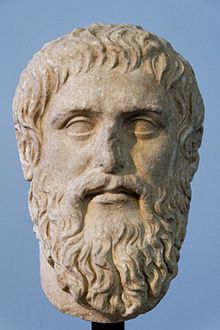 Plato (428/427 or 424/423 BCE–348/347 BCE), philosopher in Classical Greece. Considered an essential figure in the development of philosophy, especially the Western tradition, Plato was keenly aware of our inability to perceive the "real" world. (Source). 4 Plato (428/427 or 424/423 BCE–348/347 BCE), philosopher in Classical Greece. Considered an essential figure in the development of philosophy, especially the Western tradition, Plato was keenly aware of our inability to perceive the "real" world. (Source). 4Let me clarify, if I can, that word "model." When you go to a fashion show or see one on television, the designers show off their wares on living models. They are placeholders, usually for women. Unfortunately, they are far from perfect placeholders. The dress on a fashion model is not going to look the same on a woman of stouter proportions. Nevertheless live models are aready much better than dead mannequins in store displays. Scientific models are usually referred to as theories. And they too are not perfect. Scientists try to find fault with them and as they do, improve on them—like moving from mannequins to live fasion models. But even so, older theories (models) exist that are not only perfectly adequate for the purpose they serve but actually more convenient for run-of-the-mill use than the latest and greatest. Manufacturing could't work without using Newton's laws of physics, even though we now have theories superior to those born from Isaac Newton's mind. And oddly enough, still do not seem to harmonize well with each other such as relativity and quantum mechanics. Scientific theories are approaches to (as yet, and probably forever unreachable) ultimate truths. Being superceded by better theories simply means getting closer to ultimate truths, but not finally arriving there. Scientific theories are creations of the human mind, and we, humans, have our limitations. (Even ultimate truths are not likely to be ultimate at all, but we'll get to that later.) We, at least most of us, are born, live and die in something like, what has become known as, Plato's Cave. 5 In his Republic, Plato has his mentor, Socrates, tell about a gathering of people who all of their lives lived chained to a wall inside a cave. They are watching another wall on which are projected shadows of things (higher truths) they cannot observe directly. It is those shadows that are the reality for those kept in chains and who are inventing names for the things they see, those shadows. He then pictures a philosopher as a former prisoner who, by being freed from the cave, begins to understand that those shadows on the wall do not make up reality because he is now able to see, a "true" reality instead of merely seeing what the prisoners see, shadows of realiy. It is thus that we might say that Socrates and Plato perceive a philosopher as one whose thoughts transcend ordinary folk's sense of reality—"common sense" if you will. Transcendent means, by one definition, being beyond the limits of ordinary experience.* As to how well philosophers do understand this higher level of reality is the subject argued over by those unchained philosophers shown to our left in Saenredam's gravure above. 7  Immanuel Kant (1724–1804), a German philosopher who is widely considered to be a central figure of modern philosophy. His major work is "Critique of pure reason." Kant argued that our experiences are necessarily structured by the features of our minds—how our minds have evolved—hence features we all share. (Source). 8 Immanuel Kant (1724–1804), a German philosopher who is widely considered to be a central figure of modern philosophy. His major work is "Critique of pure reason." Kant argued that our experiences are necessarily structured by the features of our minds—how our minds have evolved—hence features we all share. (Source). 8Let's take the definition of transcendent a step further. Following the philosopher Immanuel Kant, transcendent is defined as being beyond the limits of all possible human experience and knowledge, hence beyond the grasp even of our philosophers. Which, to my simple mind, means that all those philosophers (including the natural philosophers we call scientists) are themselves shackled in a super cave; one we might name "Kant's cave." Inside Plato's cave, transcendent is to be defined the first way (going beyond the limits of ordinary experience—or beyond common sense); outside that cave rules the Kantian philosophy (going beyond the limits of all possible experience—or beyond what philosophers and scientists can come up with). And so, if I permit myself to think of God, I am attempting to think entirely outside the cave as depicted by Saenredam. And that, according to Kant, is a no, no. There is no exit from our seemingly universal cave, the one we think of as having been created by the Big Bang when time began and matter was born in a space infinitesimal small.* 9 And so, the only transcendence it is possible to write about is within the cave depicted by Saenredam. Hence, that is also the space for philosophers of religion to practice their philosophy, be he a Tom Harpur or she a Karen Armstrong. Their most prominent working concepts, I gather, are labelled God, religion (Christianity, say), and spirituality. And, as Saenredam shows in his gravure, they discourse among themselves, with some Fathers of the Church listening in, while others, shown in the picture's foreground, attempt to teach some of the masses and heal the afflicted. I perceive the three figures standing outside the cave as God with the still naked Adam and Eve before the partaking of the forbidden fruit and then being condemned to live within the cave. God is dressed: He knows the cave inside and out. As for that big hole: just some artistic licence, an artist's creation of a century and a half before Kant's philosophy shut it tight, thereby taking a big bite out of transcendence. 10 We might begin by trying to set some boundaries by defining religion, spirituality, and divinities. Religion first. In the Oxford Companion to the Bible I find: "Narrowly understood, religion means actions, especially cultic or ceremonial, that express reverence for the gods." The cultic part of that definition puts the word "religion" in some disrepute and so, just to make sure, James 1:27 speaks of "true religion," which is visiting orphans and widow in their affliction ["By their fruits you shall know them."], and to remain unstained by the world. More broadly, it involves a complex of faith and conduct, reverence for the gods and for the social and moral order. The Old Testament mentions "Fear of the Lord." You'll get the picture, I imagine, and so I'll leave it here. 11 Spirituality is a concept that leaves me nonplussed for not only is there no widely accepted definition, but its meaning shifts about over time and from one religion to another. In Western society, the word "spirituality" came first in use in the fifth century and its meaning has been changing ever since. It is said that originally it meant the same as "religion." I believe that is still the case for many, but certainly not for others. It is realized that one does not need to be (formally) religious, yet sense him- or herself as harboring spiritual emotions. Although I have some sense of what spirituality means and I am ready to assume that so do others, question is whether someone else's sense is the same as mine. Are we among ourselves really on talking terms? I have the uneasy feeling that such is not quite the case. Good reason to try avoid this concept. But then again, that is not altogether possible because the term is connected with religious practices such as communal praying during church services. Personally, I have also a sense of it being connected with one's ethics. And ethics is deeply concerned with social and moral order, leading us back to paragraph 11. 12 Next, getting down to brass tacks, who or what is meant by "God"? Not uncommon is the question, "Do you believe in God?" What would be your answer? If the answer is "yes," you are likely to be considered a religious person and likely assumed to revere Him, ref. paragraph 11. If your answer is "no" you are likely considered to be an atheist—even if your "no" has more to do with the "believe in" part of te question than the "God" part. (How does one explain what is meant by "believe in"?) If you say "I don't know what is meant by 'God'," then you'd be agnostic, meaning simply "knowing not." If that is to be turned into either a "yes" or a "no" then, firstly, a clear understanding is needed of what we all mean by "God." 13 So, who or what is God? How is He (or It?) defined. Most commonly as "the Supreme Being." And that answer, the widely known theologian Karen Armstrong tells us in her book The case for God, is wrong! (I told you at the outset that this chapter is, for me, difficult to write.) God is not the Supreme Being for a simple reason, that God is not a being at all. Writes she further that we don't really understand what we mean when we say that "He" is good, wise, or intelligent. Quoting her, "People of faith admit in theory that God is utterly transcendent, but they seem sometimes to assume that they know exactly who 'he' is and what he thinks, loves and expects. We tend to tame and domesticate God's 'otherness.' We regularly ask God to bless our nation, save our queen, cure our sickness, or give us a fine day for the picnic. We remind God that he has created the world and that we are miserable sinners, as though that may have slipped his mind. Politicians quote God to justify their policies, teachers use him to keep order in the classroom, and terrorists commit atrocities in his name. We beg God to support 'our' side in an election or a war, even though our opponents are, presumably, also God's children and the object of his love and care." 14 Probably important to our quest of learning what made people, going back to our earliest ancestors, think whatever they thought, is our superficial belief that people have always thought about God [and spirits] in exactly the same way as we do today. Writes Armstrong, "Despite our scientific and technological brilliance, our religious thinking is sometimes remarkably underdeveloped, even primitive." I'll stop quoting from this particular book, but I would be amiss not to say that she is a foremost thinker about matters of religion, gods and God in particular. And, lest I forget, a strong advocate of compassion among mankind. In her words, "Look into your own heart, discover what it is that gives you pain and then refuse, under any circumstance whatsoever, to inflict that pain on anybody else." Is there a better way of stating the Golden Rule? 15 Turning to anther one of her books, A history of God, she tells us that one theory, published way back in 1912, has it that in the beginning, human beings created God and that he was the cause of all things and ruler of heaven and earth. No images, no temples, no priests, too exalted for some inadequate human cult. Gradually he faded from the consciousness of many of his people. That single deity was named High God or Sky God. And not only in the beginning; the notion is still alive among many indigenous African tribes (and, I believe, among American Indians as well). It is suggested that mostly he was replaced by lesser spirits or gods. Monotheism became polytheism. 16 The Epic of Gilgamesh mentions numerous deities, each with one or more roles to play. Similarly, the people of Canaan had their pantheon from which to pick and choose. Ancient Egyptians clearly distinguished between a superior deity, "Ra," and lesser ones for which they had a different word, "neter." In the Middle East, gods were perceived as behaving same as mortal humans. Being invisible, they gave humans the uneasy feeling of being watched and that they expected respect in the form of offerings. Frequently humans called on them for favors, notably to sustain them in their livelyhood. There was a lot of tit for tat. All very much the same in acient Greece and Rome. As many still do today such as by asking a saint (spirits being out of the question) for help in obtaining a favor from the Highest, making a promise in return. 17  Numinus, a comic-book character created by Jon Bogdanove and Gray Morrow. Many ancients imagined mortals having divine alter egos. (Source). 18 Numinus, a comic-book character created by Jon Bogdanove and Gray Morrow. Many ancients imagined mortals having divine alter egos. (Source). 18About a century ago, the German historian of religion Rudolf Otto expressed his belief that any human desire to understand the origin of the world and what makes for ethical behavior was preceeded by the numinous, a word related to the Latin word for spirit, but not simply another word for spirituality. The writer C.S. Lewis of Alice in Wonderland fame explained the meaning of "numinous" this way: "Suppose you were told there was a tiger in the next room: you would know that you were in danger and would probably feel fear. But if you were told 'There is a ghost in the next room,' and believed it, you would feel, indeed, what is often called fear, but of a different kind. It would not be based on the knowledge of danger, for no one is primarily afraid of what a ghost may do to him, but of the mere fact that it is a ghost. It is 'uncanny' rather than dangerous, and the special kind of fear it excites may be called Dread. With the Uncanny one has reached the fringes of the Numinous. Now suppose that you were told simply 'There is a mighty spirit in the room', and believed it. Your feelings would then be even less like the mere fear of danger: but the disturbance would be profound. You would feel wonder and a certain shrinking—a sense of inadequacy to cope with such a visitant, of prostration before it—an emotion which might be expressed in Shakespeare's words 'Under it my genius is rebuked'. This feeling may be described as awe, and the object which excites it as the Numinous." Well, I think that the Epic of Gilgamesh exemplifies that well. 19 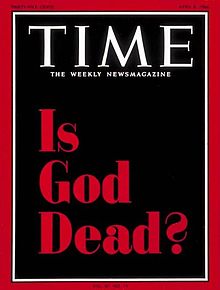 A magazine cover that shook the world of 1966. The magazine's April 8 issue looked in depth at a problem facing modern theologians, the problem of making God relevant to an increasingly secular society. Modern science had eliminated the need for religion to explain the natural world, and God took up less and less space in people's daily lives. The issue drew heavy criticism, not for its content so much, but for its cover. Too much "in your face," I suppose. (Source). 20 A magazine cover that shook the world of 1966. The magazine's April 8 issue looked in depth at a problem facing modern theologians, the problem of making God relevant to an increasingly secular society. Modern science had eliminated the need for religion to explain the natural world, and God took up less and less space in people's daily lives. The issue drew heavy criticism, not for its content so much, but for its cover. Too much "in your face," I suppose. (Source). 20One reason religion seems for many irrelevant today is that we no longer have that sense of being surrounded by the unseen. Our scientific culture educates us to focus our attention on the physical and the material; we have, as it were, edited out any sense of the spiritual or holy which pervaded the lives of people in more traditional societies and which was once an essential component of human experience. And still does for many people whom we may know quite well. 21 Karen Armstrong warns us that we should not assume that Abraham and Moses had the same perception of God as people have in modern times, nor that Abraham and Moses themselves had the same perception of "the Lord," Yahweh. We assume that the three patriarchs of Israel—Abraham, his son Isaac, and his grandson Jacob—were monotheists.* Following Armstrong: It is highly likely that Abraham's God was El, the High God of Canaan, whose name is preserved in such Hebrew names as Israel and Ishmael. They experienced him in ways that would not be unfamiliar to the pagans of the Middle East. El is a mild deity compared to Yahweh of Moses, who is a terrifying taskmaster. El appears to Abraham as a friend and sometimes even assumes human form, something quite common in the pagan world of antiquity. Even though, in general, the gods were not expected to intervene in everyday human life, they did meet face-to-face certain privileged individuals in mythical time such as frequently occurs in Greek mythology. Genesis 18:1 tells us that the Lord [El to Abraham] appeared to Abraham, sitting at the entrance of his tent in the heat of the day. When Abraham saw him, accompanied by two others, he invited El to rest in the shade of an oak tree and offered water for washing his feet as well as nourishment. El, being quite appreciative, returned the favor by promising that Abraham's ageing wife Sarah would bear him a son, in fact repeating an earlier promise that Abraham would be the progenitor of a great nation. A less appreciative El dealt with the people of Sodom and Gomorrah whom, because of their sinful behavior, he wiped out, and for good measure their cities as well. Divine punishment for aberrant behavior is a biblical theme ever recurring, with the Babylonian exile the best known. 22 Whereas the lives and genealogy of Abraham and his descendants take up most of Genesis, the central figure of the four books following is Moses—militant leader, stern judge and legal administrator, occasional intercessor for his people when facing the wrath of a singular God, and eventually the supreme authority in the Jewish religious tradition. Although his people rebelled from time to time and resorted to devoting themselves to other gods, it is through Moses that polytheism made way for monotheism. The Ten Commandments plus many subsequent commandments came through Moses directly from a singular God. Following God's instructions, religion became strongly formalized through the construction of a tabernacle (a moveable tent) with the Ark of the Covenant, the Table of Showbread, the Menorah, and Altars for burnt offerings and for incence, a bronze basin. God gave Moses instructions for priestly garments and for the ordaining of Aaron (said to be Moses's brother) and his sons as priests, for collecting a sanctuary tax, for mixing anointing oil and incence, and for conducting rituals: all in all clearly a model for the Jerusalem Temple and the much later Jewish synagogues, Christian churches and Islamic mosques. To be sure, there is a major break in this sequence in that the Tabernacle and the Temple were places with inner sanctuaries for the worshipping of God by ordained priests exclusively. Synagogues and Churches, in contrast, are entirely open to all, primarily for study of holy texts and communal prayer, activities typically packaged in liturgical sequences with an inclusion of hymns.* 23 But sticking for now with the ephemeral, two things I find most striking are that their are no historical accounts outside the Bible of the existence of either Moses or that of Jesus, the two most important persons in the Old and New Testaments respectively, and, yet, that the influence of both by far outpaces the influence of any historical figure in Western society be he Alexander the Great or Charlemagne. We need to figure out why that is so in trying to find out why we think the way we do. 24 By its own testimony, the New Testament is still very much grounded in the Laws of Moses. What is special to Jesus is his, what we might call humane, interpretation of the Law. John 1:17 says, "For the law was given through Moses; grace and truth came through Jesus Christ." Compassion is put on the front burner. Two cases in point: 25 One: Matthew 12:9–14. Going on from that place, he went into their synagogue, and a man with a shriveled hand was there. Looking for a reason to bring charges against Jesus, they [Pharisees] asked him, "Is it lawful to heal on the Sabbath?" Two: John 8:2–11. At dawn he appeared again [upon return from the Mount of Olives] in the temple courts, where all the people gathered around him, and he sat down to teach them. The teachers of the law and the Pharisees brought in a woman caught in adultery. They made her stand before the group and said to Jesus, "Teacher, this woman was caught in the act of adultery. In the Law Moses commanded us to stone such women. Now what do you say?" From these two snippets from the New Testament one perceives a softer tone. They show tolerance, a charitable outlook, and that sins are redeemable. Not that compassion was exactly a new concept; we already found it in Sumerian writings, remember? But through Jesus, it is emphatically brought to the fore. Leaving us with the question, just how compassionate has Christian society been throughout the two millennia since that time?! 29 Two snippets not the New Testament make. The events about Jesus' birth, his sermon on the mount, and his trial, culminating in the crucifiction and climactically leading to his resurrection: these are the major components of the gospels, even if the gospels give different, even contradictory accouns. 30 Frankly, I have my doubts about the mass of people understanding what God and "their own" religion are all about. Obviously, as long as church services were entirely conducted in Latin, a foreign language to most, how could that be otherwise? But even now, with the Bible available in just about every language spoken around the world, and nearly all people in Western societies being literate, how many prefer reading the Bible rather than, say, reading pulp fiction or watching TV? At any rate, there are two distinct paths to explore: one, the impact of religious messages on the brain; two, how receptive are our brains to those messages? Let's go now for a short reconnessance of where that second path is leading to. 31 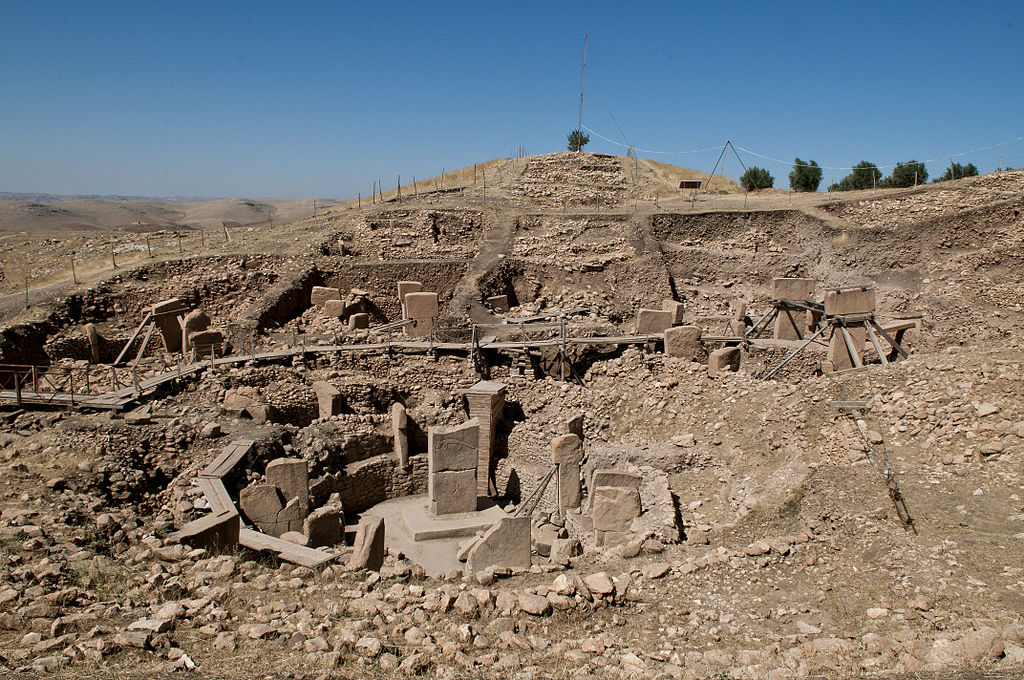 This temple at Göbekli Tepe was constructed thousands of years before there were cities built in its vicinity. This is taken as evidence that religion preceded civilization, in contrast to the general belief held until its discovery that it is civilization that brought about organized religion.(Source). 32 This temple at Göbekli Tepe was constructed thousands of years before there were cities built in its vicinity. This is taken as evidence that religion preceded civilization, in contrast to the general belief held until its discovery that it is civilization that brought about organized religion.(Source). 32In 1993, Dr Andrew Newberg conducted an experiment for which a group of Franciscan nuns agreed to serve as subjects. He wished to scan their brains before and during which they engaged in centering prayer, a verbally based prayer (in contrast to meditation with its visual orientation). The scans showed that the prayers increased activity in the frontal lobe (indicating increased attention) as well as in the language area. In a similar experiment with meditating Buddhist monks there was increased activity in the frontal lobe as well, but with a simultaneously decreased activity in the languagea area. These and some other simlar studies suggest, but do not quite prove, that there exists a relationship between spirituality and the brain. This field of scientific study has been given the name neurotheology. Scientific interest in neurotheolgy has increased rapidly, especially over the last two decades, and involves the participation of scientists in a wide range of specialties; evolutionary psychology prominent among them. As such a variety of theories have come to the fore such as about the benefit of social cohesion: morality, cooperative behavior, sympathy, empathy. But even today, with the aid of brain-scanning devices and a vast store of knowledge about genes, neurotransmitters, hormones, and mood-altering practices and substances, we are still at the beginning of true experimental science. We do already know a great deal about the vessel, i.q. the brain—well, the nervous system as a whole, actually— but we have still a lot to learn about what the vessel holds or can hold, and how that affects the entire human body. 33 As for our recurring question, why do we believe what we believe?, Newberg says that beliefs are necessary for survival. "Our beliefs begin to develop the moment that we are born, and we are preprogrammed to believe in certain ways. However, these ways are shaped by everything we think, feel, and experience over our lifetime. We need to hold beliefs about how the world works throughout our entire life. We need to expect certain things to happen, such as a person being nice to us if we are nice to them. But we can also have beliefs about meaning and purpose in life, about religion, and about the deep complexities of the universe. Because our beliefs are so important to our survival, we have a tendency to hold those beliefs very strongly, even when presented with opposing opinions or facts. Yet the brain is also capable of changing beliefs if we are open to new ideas and respect the beliefs of others." 34 In a book interview, Newberg was confronted with the comment, "A religious person might call a mystical vision a gift from Heaven, while a neuroscientist would just say it's an electrochemical surge firing in the temporal lobes." (Ref.) He responded, "What we have to be careful about, I think, is saying that because we capture something in the brain that is associated with these experiences, that that explains away those experiences. I don't think we can do that; and I think the more we understand what the feelings that people have when they have those experiences and how they relate to the biology itself, we're going to get closer to answering that kind of question. I don't know exactly what the balance needs to be struck is, but I think that we really need to look at both the spiritual perspective and the scientific perspective and see where they can help us understand what these experiences and what reality ultimately are all about." 35 Bibliography
|
|
Following the philosopher Immanuel Kant, transcendent is defined as being beyond the limits of all possible experience and knowledge. * fn1 Steven Weinberg, The first three minutes. (1979) Bantam Books. * fn2 A history of God, p. 14. * fn3 Tabernacle, Temple, Synagogue, and Church: Each is different, but they have much in common, by Randy Blackaby. * fn4 John 8:1–11 are not found in my New Revised Edition of the Bible's King James version. Apparently, the passage does not appear in some antique texts. * fn5 A history of God, p. 14. * fn6 |
--
| top of page |
|
Page maintenance:
Page format:monh xx, 2015
Story edit:
To be checked for timeliness:
¶ none
Reminders:
¶ none
Linkcheck: not done
XHTML verify: April 7, 2015
Backups: month. 25, 2011

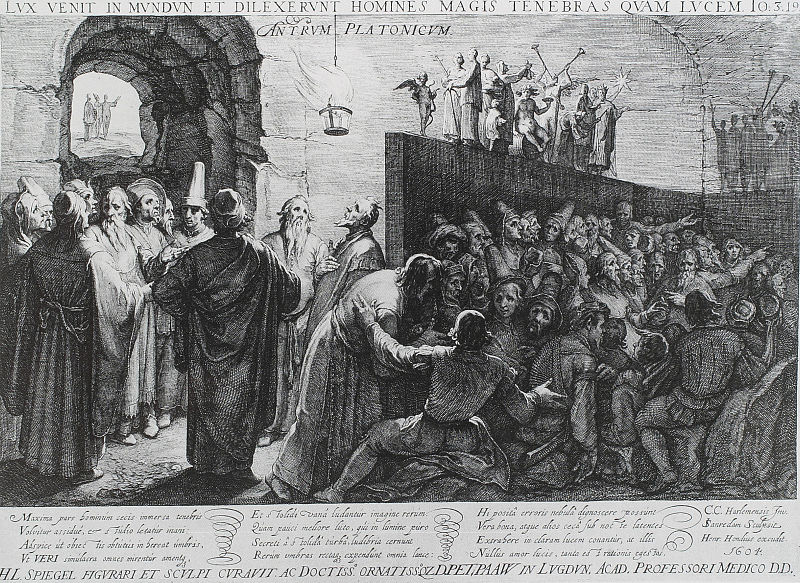
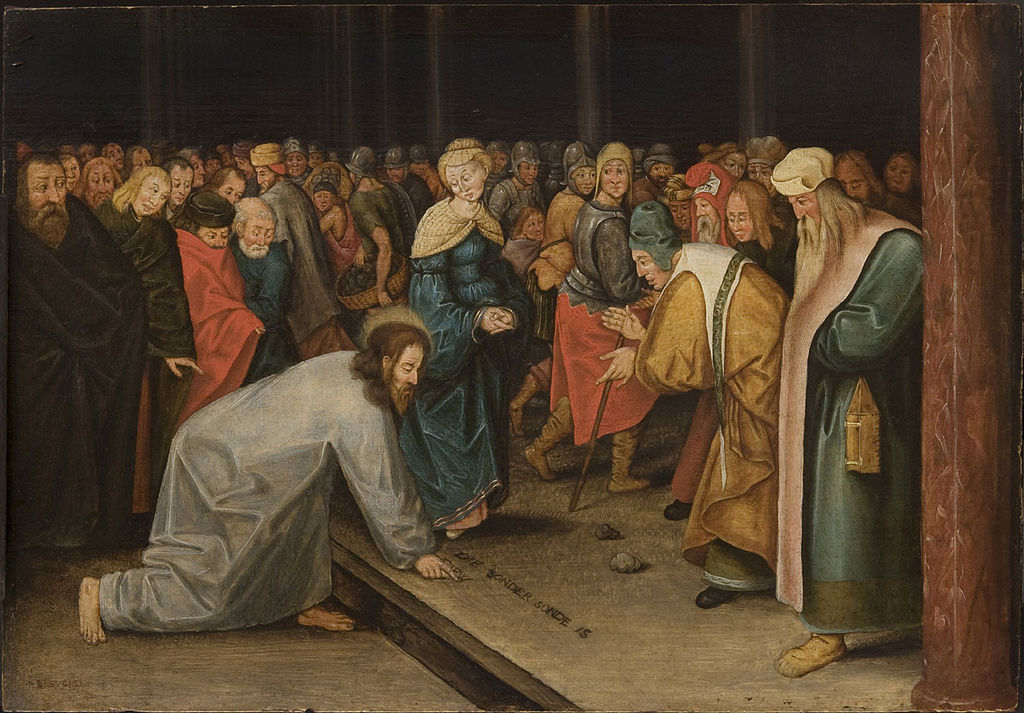 Christ and the Woman Taken in Adultery. By Pieter Breugel the Elder (~1525–1569) (
Christ and the Woman Taken in Adultery. By Pieter Breugel the Elder (~1525–1569) (